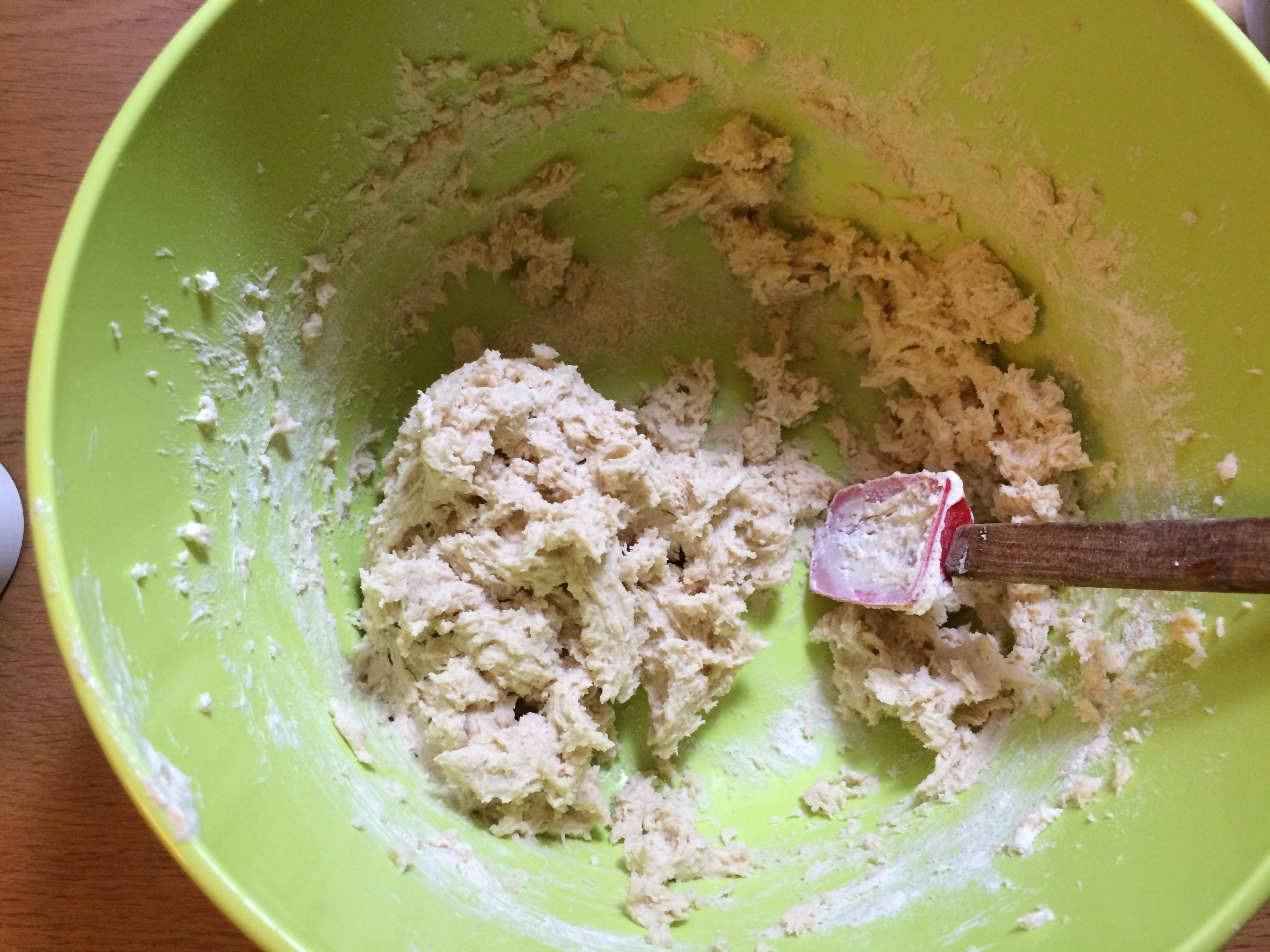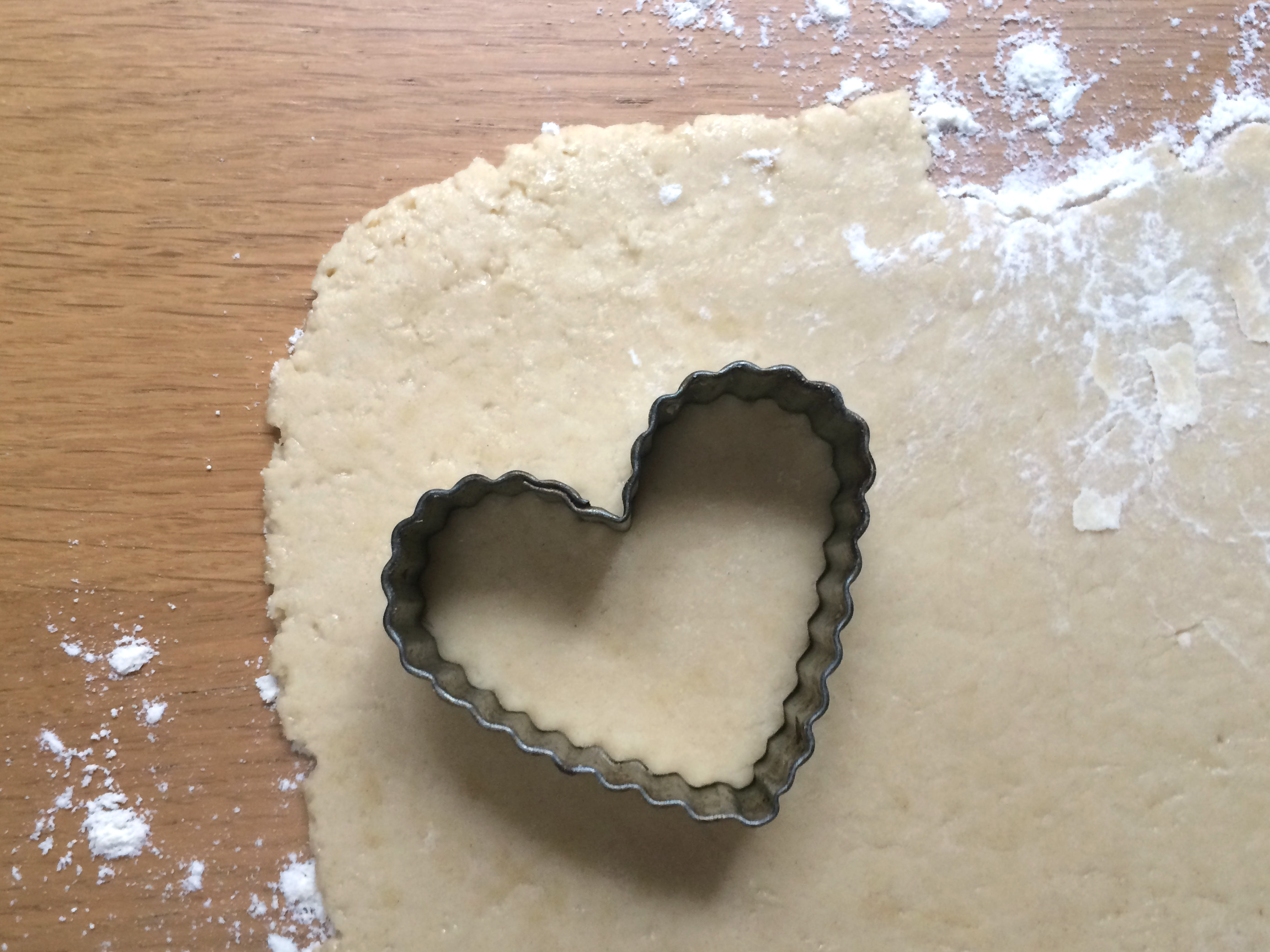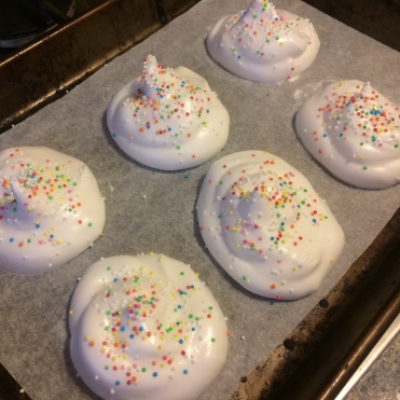I know many people who object to Valentine’s Day on the grounds that it’s mainly a commercial holiday invented to get people to buy things. This may be true, but whether we actually go out and buy things or instead just celebrate love in ways that cost little or nothing is entirely up to us. I guess you can see which way I lean!
My thought is that a day dedicated to love is a pretty good thing. Especially if you don’t make it exclusively about romantic love but expand your focus to include the love you feel for family members, friends and your cat or dog. It can be a reason to think back fondly on times that others have shown you love and that you have shown love to others. The trick, of course, is not to get sidetracked into unpleasant memories of past partners… and that’s why the more general focus is useful.
If you opt to celebrate the day by also giving a gift to someone to show your appreciation for them, consider something handmade. Like heart-shaped cookies flavored with rosewater and raspberry! It’s something you don’t come across every day, and definitely a departure from the usual chocolate.
This recipe combines a basic sugar cookie base (with a slight rose scent) and a fruity, floral and colorful royal icing. Traditionally made with beaten egg whites, royal icing (a hard, dry type of frosting) can now easily be made in a vegan version thanks to the magic of aquafaba.
I decided to color the icing with raspberry juice for the natural color and fruity notes. If you’ve ever bought frozen berries and then forgot the bag on the counter, you know that when they thaw, they release a juice (which invariably manages to leak out of the bag). This juice is fairly concentrated and thick, so is an effective coloring agent when used in a small enough quantity—something like a store-bought cranberry juice would probably be too thin and might water down the icing. If berries are in season where you live, you could try blending and straining fresh ones to obtain a juice. If you attempt this, comment below and let us know how it went! Be sure to choose red-colored berries, unless of course you want the darker, more purple color of blackberries or blueberries.
After coming up with this rose/raspberry combination, I realized it has a lot in common with my new favorite perfume, a truly unique scent featuring notes of Bulgarian rose and crushed blackcurrant leaves. So who knows, this scent may have been working on the back burner unbeknownst to me as I chose the flavors for this icing.
But let us move on to the recipe, at last…
Rosewater cookies
Makes about 2 dozen heart-shaped cookies measuring 2 in. (5 cm) across at widest part
Ingredients
- 1 and 1/2 cups all-purpose flour
- 1 tablespoon cornstarch
- 1/8 teaspoon salt
- 1/8 teaspoon baking powder
- 1/2 cup margarine
- 1/2 cup granulated sugar
- 1 teaspoon rosewater flavoring
Equipment needed: mixer, plastic wrap, rolling pin, heart-shaped cookie cutter
(For the icing recipe, scroll midway down the page)

Start by combining all the dry ingredients, except for the sugar, in a medium bowl: flour, cornstarch, salt and baking powder. Set aside.

Place the margarine, sugar and rosewater flavoring in a large mixing bowl.

Beat on medium-high for about four minutes, until the sugar and margarine are completely combined.

It will look something like this (above).

Now add half the flour mixture and beat until just moistened (as shown above). Incorporate the remaining flour mixture, beating only as much as necessary to achieve a uniform texture and form a dough. Add a bit more flour if the dough seems too sticky.

With your hands, shape the dough into a flat disk shape and wrap in plastic wrap. Place in the refrigerator for at least three hours or even overnight. Go read a book or watch a documentary about love while you wait!

After the chilling time has ended and you’re ready to bake the cookies, preheat your oven to 350°F (180°C). Remove the dough from the refrigerator and, on a floured surface, roll it out flat with your rolling pin. Dust the rolling pin with flour as you go along so the dough doesn’t stick to it. The rolled-out dough should be about 1/4 inch (1/2 cm) thick across the entire surface.

Cut the heart shapes with your cookie cutter and transfer them carefully to a baking tray lines with baking paper (or oiled). You may want to use a thin metal spatula to unstick the hearts from the table top so they don’t become misshapen as you pick them up. Continue until you have filled up the tray or used up all the dough.

The cookies will not spread as they bake, so you can place them fairly close together on the baking tray. Place on a middle rack of your preheated oven and set a timer for 10 minutes. When the 10 minutes are up, check to see whether the edges have turned a bit golden-brown. If they have not, leave them in the oven another couple of minutes.

Remove from oven and leave to cool while you make the icing.
Rosewater raspberry royal icing
Makes about two cups of icing
Ingredients
- 3 tablespoons aquafaba (liquid from a can or jar of chickpeas)
- 1 to 2 cups powdered sugar
- 2-3 teaspoons rosewater flavoring
- 1/4 cup juice from thawed frozen raspberries or other red berries
Equipment needed: mixer, small strainer

Open a can or jar of cooked chickpeas or other legumes such as navy beans, kidney beans or black beans.

Measure three tablespoons of the liquid from the can or jar into a mixing bowl, ideally with a round bottom (best for working with an electric mixer). Put the can of chickpeas in the fridge to make hummus or chickpea salad with later. If you have not begun thawing your raspberries yet, take them out of the freezer and pour them into a bowl.

Beat on medium until frothy, about 30 seconds. Do not go beyond this stage, as the mixture will start to turn into marshmallow fluff!

Add the powdered sugar (must be powdered—granulated is too grainy for this recipe) and begin beating to incorporate. Start with one cup of the sugar, then add more until you’ve reached the right consistency. To prevent the sugar from flying out of a shallow mixing bowl, combine the aquafaba and sugar briefly with a rubber spatula first.

After four or five minutes, the icing will have reached more or less the right consistency (as shown above). Add the rosewater flavoring, one teaspoon at a time, and incorporate briefly with the mixer. Taste the icing after adding each teaspoonful to see if you want to stop there or make it rosier. I personally found that three teaspoons were necessary to really taste the rose, as it’s a somewhat subtle flavor, but your preference may differ. If you want to ice some of your cookies with a white color, as I have done, reserve some of the frosting in a small bowl or cup at this point. If the icing is too thick, add tiny amounts of water (1 teaspoon at a time) until it is thin enough.

Your thawing raspberries will be releasing juices as their temperature increases. If they have not yet done this, you can help the process along by placing the bowl into another bowl with a small amount of hot water inside. If you do this, make sure that the bowls are heat-resistant enough to withstand the temperature change without cracking. Skim some juice from the side of the bowl with a spoon.

Add a few drops of the raspberry juice to your icing. If there seem to be some seeds mixed in, or if you can’t tell, use a small strainer to ensure that the icing remains seed-free (and thus smooth).

Incorporate the juice with the mixer bit by bit until you have achieved a nice pink. Note that the more juice you add, the more liquid the icing will become and the less uniform the final result may be (and it will also take longer to dry). A lighter pink is thus safer, especially if you’re pressed for time and need to take the cookies somewhere soon after icing them. If you want to use multiple shades of pink, reserve some of your lighter-pink mixture before adding more raspberry juice.

If your icing gets to this color or darker, you may end up needing to add a bit of extra powdered sugar to make it thicker again.

Now that you have all your colors ready, you can begin icing the hearts! Use a smallish spoon, like the one above, to place a small amount of icing on the cookie’s surface and kind of push it around to cover the top.

Leave the iced cookies somewhere safe (where your cat won’t walk on them, etc.) to dry. Again, the darker pinks will take longer to dry than the white icing and lighter pinks. In the photo above, the white hearts had been iced some time earlier and the pink icing had just been applied.

It’s funny how I got such different sizes using the same cookie cutter (must be due to stretching when picking the hearts up from the tabletop), but I guess that gives the collection a true artisanal look. 😉

In the photo above, you can see what each color looks like when completely dry. The darker pink, being thinner, ended up with bubbles and some streaking, so again, I would recommend sticking with the lighter pinks.
Now you can package up your hearts to give to that special someone. They’ll love the handmade touch.
Variations: Use a different flavoring in place of rose (vanilla, almond, coconut, etc.). Create even more colors of icing using matcha, blue spirulina or a combination of these two for purple). Use different shaped cutters (star, moon, Eiffel Tower, etc.).














































 Today we have yet another recipe I concocted while visiting my parents back in the US this summer. I’d purchased a bottle of
Today we have yet another recipe I concocted while visiting my parents back in the US this summer. I’d purchased a bottle of  I thought it would be fun to make a similar drink with a vegan twist, using Baileys Almande and nice cream (blended frozen bananas) instead of ice cream made from animal milk, and this is the result, which I have named “white squirrel.”
I thought it would be fun to make a similar drink with a vegan twist, using Baileys Almande and nice cream (blended frozen bananas) instead of ice cream made from animal milk, and this is the result, which I have named “white squirrel.”









































































